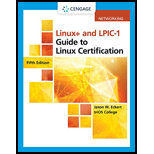Arrange the type of memory from fastest to slowest. Registers, Cache, Main memory, Magnetic Disk. O Magnetic Disk, Main memory, Registers, Cache. Main memory, Registers, Cache, Magnetic Disk. O Main memory, Cache, Registers, Magnetic Disk. Cache, Registers, Main memory, Magnetic Disk.


1) In any Operating System, it is necessary to have a dual mode operation to ensure the protection and security of the system from unauthorized or errant users.
2) This dual mode separates the User Mode from the System Mode or Kernel Mode.
3) The Instructions that can run only in System Mode or Kernel Mode are called Privileged Instructions.
4) The Instructions that can run only in user Mode are called Non-Privileged Instructions.
5) Operating system runs in system or kernel mode and it can execute the privileged instructions. Processes are created by users for their application requirements and can't execute privileged instructions
5) So option "The OS execute in system mode and the processes execute in user mode. However only OS is allowed to run privileged instructions" is correct option
Step by step
Solved in 4 steps






